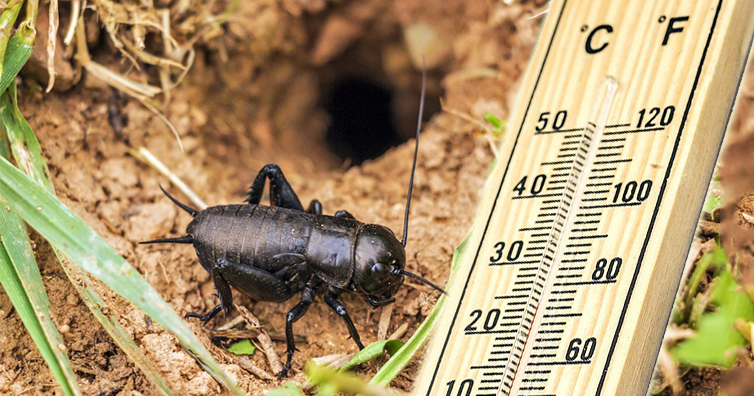Common wisdom has it that one can tell the outdoor temperature by simply counting the chirps of a cricket. The surprising thing about this saying is that, even though it does seem to fit all the criteria of being an urban legend, it actually works! You can indeed tell the temperature by counting the chirps of a cricket and here’s how to do it.
But before jumping into the formula, here’s how the notion started.
The “cricket chirps – temperature” correlation first appeared in 1897 when physicist Amos Dolbear noticed that you can pretty accurately determine the number of cricket calls by using the outdoor temperature (the reversed idea). Since then, people have been using many ways to get the temperature by the number of chirps within a certain time interval but thankfully, science has finally given us the “golden formula”. (the article continues after the ad)
In 2007, Dr. Peggy LeMone of the NASA funded “The GLOBE” Program, studied the theory and concluded that by using 14 second intervals for Fahrenheit and 25 second intervals for Celsius, she cloud closely match the actual outdoor air temperature.
Here’s the formula she landed on:
1. FAHRENHEIT
To convert cricket chirps to Fahrenheit temperature, simply count the number of chirps in 14 seconds and then add 40. For example:
40 chirps + 40 = 80° F
2. CELSIUS
To convert cricket chirps to Celsius temperature, simply count the number of chirps in 25 seconds and then add 4. For example:
54 chirps ÷ 3 + 4 = 22° C
Or of course, you can convert Fahrenheit to Celsius by using the simple formula we talked on our How You Convert Fahrenheit to Celsius (And Vice Versa) article.
Pretty neat, ain’t it?
If you like what you read, then you will definitely love this one: This Is How You Can Tell The Age Of Every Fish
Photos: Bergadder / Pixabay, Max Pixel
Photoshop: I’m A Useless Info Junkie
Sources: PREDICT TEMPERATURE WITH CRICKET CHIRPS | Cricket Chirp Thermometer



